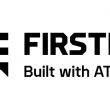Tying it all together
The first three articles in this disaster-communications series examined some of the needs common to any type of disaster, and identified the specific equipment, personnel and training that are necessary to fill those needs. This segment will discuss how to package the various components into a solution that can be replicated.
In 1992, while employed by Lee County, Fla., I was part of the disaster response ream that was dispatched to the Florida City, Fla., area following Hurricane Andrew. It was quite an educational event. While our response group had radios and technical personnel capable of programming them, we found that there was no local communications infrastructure for the radios to operate on. All of the towers were either laying on the ground, or they and their associated equipment building were damaged beyond use. It was during this event almost 20 years ago that I found that no one, including the Federal Emergency Management Agency (FEMA), had a plan or the means to provide rapid-response, transportable radio infrastructure to support disaster recovery operations.
The solution for that incident was offered several days later, but not before a great amount of confusion and frustration. The county, state and federal agencies had taken over the old Eastern Airlines facility and, for the most part, there was gridlock in the building. Some of the gridlock was telephone-equipment related, but the worst part was the functional gridlock, as all of the agencies represented argued about who was in charge. Vast numbers of first responders were sitting at the local stadium, which was being used as a marshalling area, waiting to be tasked, while the victims suffered. Calls by the communications vendors either went unanswered or were routed to people who could not make a decision to allow the vendors’ personnel entry into the affected area.
After five days of not being able to get an answer from the group within the Eastern Airline facility, Motorola finally turned to Lee County, which had a contingent of personnel in Florida City and was running supply convoys every 48 hours. The Motorola personnel and equipment went in with the Lee County convoys and shortly after we started putting systems on the air.
Communications in the area were limited to simplex short range for the first responders and the overall response was piecemeal. It is safe to say that the management effort to restore communications was a debacle of monumental proportion.
It was obvious to anyone involved in the Hurricane Andrew aftermath that whatever plans, if any, for disaster response bore no connection to reality. I was relatively sure that given the bright lights and microscopic analysis that were placed on everything that went wrong, these problems would be addressed and fixed. I was wrong. The truism that “we seldom learn from our mistakes” rang true once again.
Similarly, while I would like to write that these problems had been resolved in time for Hurricane Opal in 1995 or Hurricane Katrina in 2005, it would be inaccurate to do so. And while I’d like to write that these issues had been resolved prior to the 2010 hurricane season, a recent review of the National Incident Management System (NIMS) standardized resource list tells me it hasn’t. While many of the resources needed in a disaster response have been incorporated into this list, the communications resources are abysmal and proof that we still haven’t learned from our mistakes.
The two-part solution involves the formation of dedicated task force units and a joint communications support unit (JCSU) as part of each dedicated task force. The JCSU is capable of responding to a disaster with the other first responders and establishing full-spectrum communications infrastructure, including land-mobile-radio (LMR) systems for local communications and reach-back capability in the form of HF radio and satellite communications, for both voice and data transmissions. Along with the transportable infrastructure and power systems, the JCSU consists of radio technicians to set up, operate and maintain the infrastructure, as well as program the mobile and portable subscriber radios from multiple disparate agencies.
The successful creation and implementation of JCSUs can be accomplished by establishing them as a NIMS standardized resource and funding them through existing communication grants, such as those provided by the Public Safety Interoperable Communications (PSIC) and Urban Area Security Initiative (UASI) grant programs. The next level of opportunity would be for the individual states to implement a similar requirement. However, such an effort would be hindered by the fact that, all too often, a state’s emergency management staff has little to no dialog with the communications staff when it comes to planning. Where there has been some movement in this area is at the local level, but their problem up to this point has been a lack of guidance and standardization. The NIMS standardized resource list may assist in this regard.
While it is not necessary for every agency to have a JCSU capability, there needs to be enough of them within a given area to provide the kind of response that a large-scale event necessitates. Given the size and risk that the state of Florida encounters every year during hurricane season, there should be no less than six JCSUs established, funded, equipped, staffed and trained. From a larger viewpoint, the numbers would be something like 25 among the Gulf Coast states, and a total of 50 both east and west of the Mississippi River. Meanwhile, both Alaska and Hawaii would need a small number of a modified version to fit their circumstances.
Again, the JCSU should be part of a larger dedicated response task force. This core group should be the starting point for everything that happens during the disaster response, including the restoration of vital communications. It should be built from the agencies that work together every day, and should be equipped to provide the basic command and control, communications, food and housing, fuel and vehicle-maintenance capabilities needed for the response effort. In addition, it would have a small number of law enforcement, fire service and EMS units that can be augmented with first responders from smaller agencies as necessary.
Despite the existence of the Incident Command System (ICS), getting groups from multiple agencies that have never worked together before to function smoothly takes several days at best. Moreover, the traditional approach to large-scale emergency response has been to create ad hoc task groups without the support of established core groups. Having worked in both of these environments, I can report that it doesn’t take a rocket scientist to see that the dedicated task force option functions far better than the ad hoc version. The next logical step is to build upon that by creating a well-equipped, well-organized JCSU within the dedicated task force group.
- View the What you’ll need PDF to learn about the suggested elements for setting up a Level-I Joint Communications Support Unit.
Ben Holycross is the radio-systems manager for Polk County, Fla. He has more than 35 years in public safety, with the last 25 years in communications.
Related Stories

















